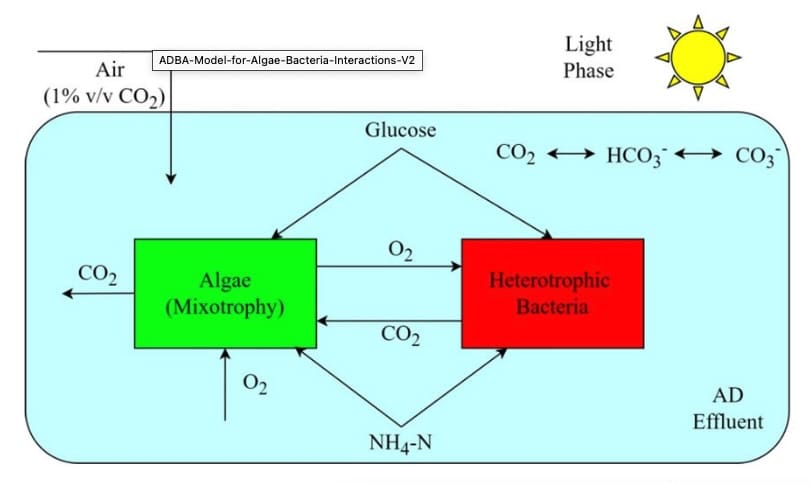Wastewater Treatment’s ADBA Model for Algae-Bacteria Interactions

Microalgae have emerged as a promising solution for wastewater treatment due to their high metabolic efficiency and ability to utilize nutrients. However, large-scale algal cultivation faces challenges such as high production costs and the need for freshwater. A new study published in the Journal of Bioresources and Bioproducts presents an ADBA model that addresses these challenges by optimizing algal growth in anaerobic digestion effluent.
The ADBA model, developed by researchers at Washington State University, is the first to comprehensively describe the interactions between algae and bacteria in anaerobic digestion effluent under mixotrophic conditions.
The model integrates key parameters, including algal and bacterial growth rates, nutrient consumption, and light inhibition due to effluent turbidity. It also introduces novel features such as the algae-bacteria interaction exponent and the growth inhibition coefficient because of effluent turbidity.
The study found that the model accurately predicted algal and bacterial growth dynamics, achieving an average R² value of 0.90 across all experimental conditions. The results showed that algal productivity was significantly affected by effluent turbidity and bacterial competition.
